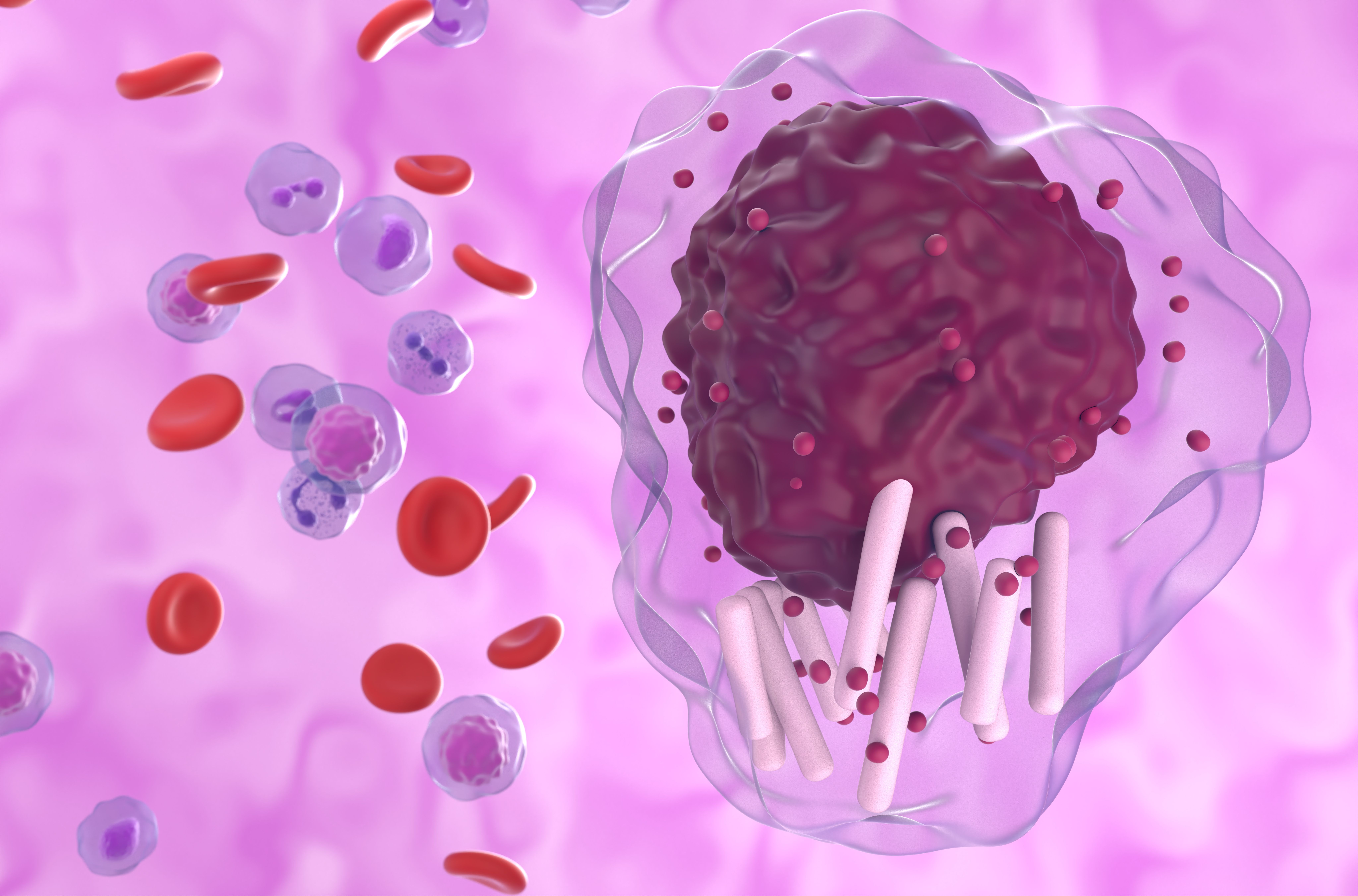Pirtobrutinib Combination Shows High uMRD Rate in CLL
Pirtobrutinib, venetoclax, and obinutuzumab demonstrated a numerically higher rate of undetectable minimal residual disease vs ibrutinib and venetoclax in chronic lymphocytic leukemia.

In a phase 2 trial (NCT05536349) presented at the 2024 ASH Annual Meeting, the combination of pirtobrutinib (Jaypirca), venetoclax (Venclexta), and obinutuzumab (Gazyva) showed a numerically higher rate of undetectable minimal residual disease (uMRD) compared with the previously reported combination of ibrutinib (Imbruvica) and venetoclax in patients with chronic lymphocytic leukemia (CLL).
Regarding MRD data, investigators analyzed serial time points in blood and bone marrow. At the end of cycle 7 (n = 66) for those with peripheral blood samples, the uMRD rate at less than 10-6 (uMRD6) was 79% vs those with bone marrow samples at 64%. Additional data include 9% vs 12% having MRD between 10-6 to less than 10-5, 5% vs 15% having MRD at 10-5 to less than 10-4, and 6% vs 9% having MRD at 10-4. There was 1 patient in the peripheral blood group with a missed sample.
At the end of cycle 13 (n = 41), MRD in the peripheral blood and bone marrow included rates of 85% vs 80% at MRD of less than 10-6, 8% vs 5% at MRD 10-6 to less than 10-5, and 7% vs 10% at MRS 10-5 to less than 10-4. In the bone marrow group, 3% had MRD at 10-4 or higher, and there were 2 missed samples.
“We report high rates of uMRD6 remission combined with pirtobrutinib, venetoclax, and obinutuzumab as first-line treatment for patients with CLL,” Nitin Jain, MD, professor in the Department of Leukemia, Division of Cancer Medicine at The University of Texas MD Anderson Cancer Center, said during the presentation. “With a median follow-up of 11.9 months, no patient has progressed or died.”
Between February 2023 and September 2024, 80 patients were enrolled. The median patient age was 63 years; 26% were 70 years or older, and 75% were male. Additionally, 79% had unmutated IGHV status, 31% had NOTCH1 mutations, 21% had SF3B1 mutations, 14% had KRAS/NRAS mutations, 10% had BIRC3 mutations, and 10% had TP53 mutations. Of note, 13% had del(17p)/TP53 mutations.
During cycle 1, patients were given 200 mg of pirtobrutinib once daily plus obinutuzumab at 100 mg on day 1, 900 mg on day 2, 1000 mg on day 8, and 1000 mg on day 15. Before cycle 2, a CT scan for tumor lysis syndrome (TLS) was conducted. During cycle 2, patients were given 200 mg of pirtobrutinib, 1000 mg of obinutuzumab on day 1, and a weekly ramp-up dose of venetoclax; from cycles 3 to 6, matched pirtobrutinib and obinutuzumab were given as in cycle 2 plus 400 mg of venetoclax once daily; at the end of cycle 4, a blood-based next-generation sequencing (NGS) MRD test occurred. After cycle 7, a bone marrow biopsy occurred. For cycles 7 to 13, pirtobrutinib was given at 200 mg daily plus 400 mg of venetoclax once daily. After cycle 13, another bone marrow biopsy and blood-based NGS test occurred.
Of the 80 patients enrolled, 66 completed 7 cycles, and 41 completed 13 cycles. To date, 36 patients are off all treatment, with 5 patients continuing for an additional 12 cycles of treatment.
After cycle 1, 90% of patients with high-risk TLS and 86% with medium risk at baseline had a downgrading of risk. Patients who were high risk consisted of any node that was 10 cm or more, or absolute lymphocyte count (ALC) of 25 k/ul or more with a node that was 5 cm or larger. Those at medium risk had any node between 5 cm and less than 10 cm or ALC of 25 k/ul or more. Low risk included all nodes less than 5 cm and ALC less than 25 k/ul.
Regarding safety, grade 3/4 adverse effects included neutropenia (60%) and thrombocytopenia (14%), with 58% needing G-CSF.Neutropenic fever was noted in 4 patients.
A dose reduction of pirtobrutinib was required in 21% of patients. Twelve went to 100 mg, 3 went to 50 mg, and 2 discontinued treatment early. Venetoclax dose reductions occurred in 31% of patients, with 7 going to 300 mg, 10 going to 200 mg, 5 going to 100 mg, 1 going to 20 mg, and 2 discontinuing.
Most patient dose reductions occurred because of neutropenia. Additionally, 2 patients developed atrial fibrillation.
Reference
Jain N, Ferrajoli A, Swaminathan M, et al. Combined pirtobrutinib, venetoclax, and obinutuzumab as first-line treatment of patients with chronic lymphocytic leukemia (CLL). Blood. 2024;144(1):1011. doi.10.1182/blood-2024-211454
Selection of Next-Gen BTK in CLL Limited By Lack of Direct Comparison
February 4th 2025During a Case-Based Roundtable® event, Nakhle Saba, MD, and participants discussed the data supporting the 2 newer BTK inhibitor therapies acalabrutinib and zanubrutinib in patients with chronic lymphocytic leukemia who received 1 prior line of therapy in the second article of a 2-part series.
Read More